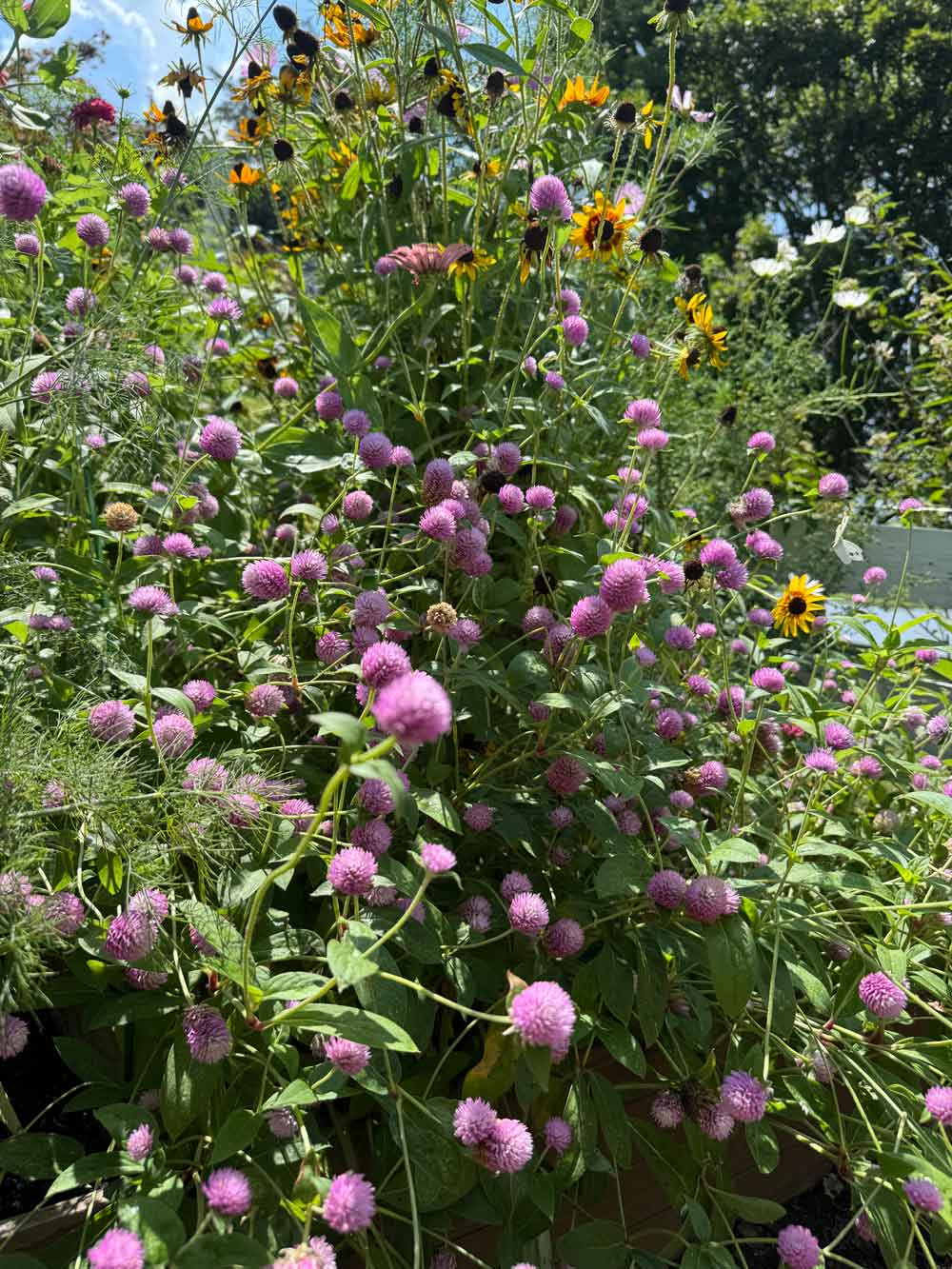About Gomphrena
Gomphrena, commonly known as globe amaranth, is a vibrant and durable flowering plant that produces a long-lasting, clover-like bloom shape that literally adds a pop of color to any garden. Growing in tropical and subtropical regions around the world, they are also found in a variety of other locations. These tough plants are not only beautiful but also low-maintenance, disease-free, heat and drought-resistant, making them perfect for a variety of climates.
When to Plant Gomphrena Seeds
Start your gomphrena seeds indoors approximately six to eight weeks before the last expected frost in your area. This head start will ensure that your plants are robust enough to transplant after the frost danger has passed.
If you live in a warmer climate, you can sow gomphrena seeds directly into your garden after the risk of frost has passed and the soil has warmed.
Where to Plant Gomphrena Seeds
Gomphrena thrives in full sun and prefers well-draining soil. They are ideal for regions with hot, dry summers, although they can adapt to partial shade environments with slightly less vigor.
How to Plant Gomphrena Seeds
If starting indoors, use a light, well-draining seed starting mix. Sow the seeds on the surface of the soil, as these seeds need light to germinate. Press them gently into the moistened mix without covering them. Maintain the soil temperature around 70°F to 75°F. Place the seed tray in a bright location or under grow lights to encourage germination. Keep the soil consistently moist but not waterlogged. A spray bottle can be used to mist the soil gently, preventing the small seeds from being washed away. Transplants can be set out when it reaches 50°F. Read more about the hardening off process here.
In warmer climates, directly sow your gomphrena seeds when soil temperatures reach 70°F. Prepare the garden bed by loosening the soil and incorporating some compost if needed. Sow the seeds on the surface, pressing them lightly into the soil, ensuring they are not covered. Space seeds or seedlings about eight inches apart.
How to Care for Gomphrena
When seedlings are a few inches tall, thin them to prevent overcrowding. This promotes healthier growth and better air circulation around the plants. Water gomphrena plants regularly until they are well-established. Once mature, they are quite drought-tolerant but will benefit and perform best from occasional watering during prolonged dry spells. Feed with a balanced fertilizer every few weeks to support steady growth, but gomphrena is also not fussy about soil type, just as long as it drains well. Applying a layer of mulch around the plants can help regulate the soil’s moisture and suppress weeds.
Gomphrena blooms from mid-summer through fall. Deadheading is not necessary as these plants are self-cleaning, but regular cutting for bouquets encourages continued blooming.
Gomphrena is relatively free from major pests and diseases. Keep an eye out for common garden pests such as aphids and treat them promptly with insecticidal soap or neem oil if necessary.
The vibrant flowers can be enjoyed in the garden or as part of floral arrangements. Dried gomphrena flowers maintain their color and shape, making them perfect for crafts and decorations.
